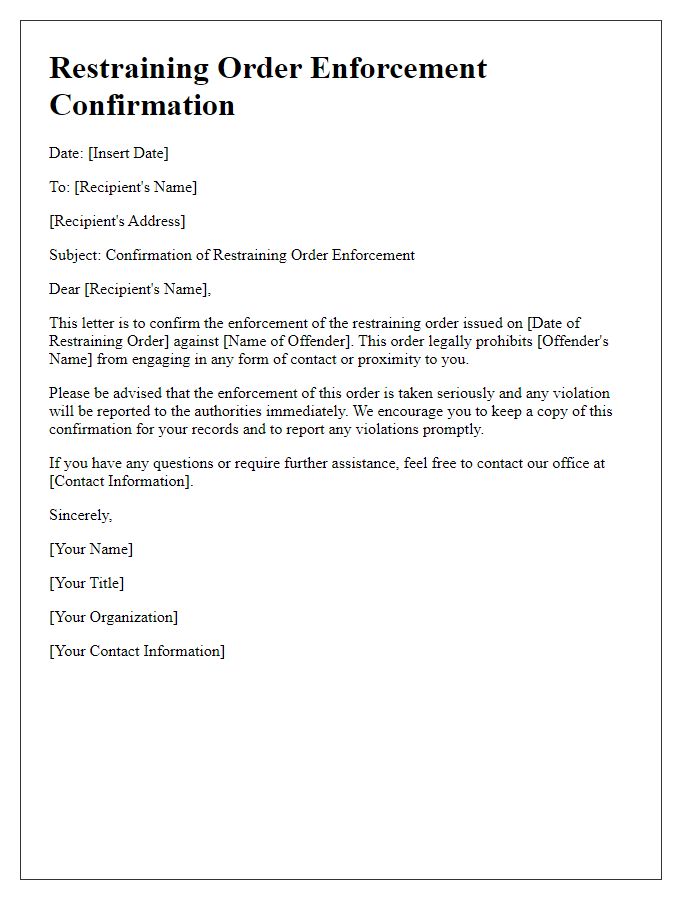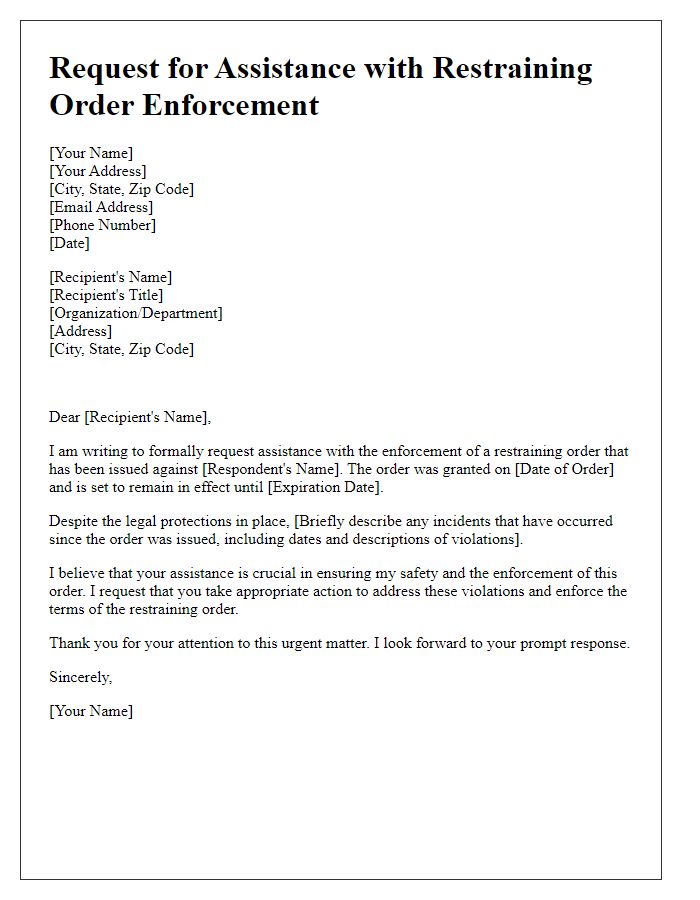Are you feeling overwhelmed by the uncertainty surrounding your safety? Navigating the legal system can be daunting, especially when it comes to enforcing a restraining order. In this article, we'll break down the essential steps you need to take to ensure your protection and peace of mind. So, let's dive in and empower you with the knowledge to assert your rights effectively!

Clear identification of involved parties
The enforcement of a restraining order necessitates a clear identification of involved parties to ensure compliance and facilitate law enforcement intervention. The plaintiff (the individual seeking protection, often referred to as the victim) must provide a complete name, address, and contact details. The defendant (the individual against whom the restraining order is issued) similarly requires identification through their full name, current address, and any known contact information. Additional identifiers, such as date of birth and social security number, may be included to disambiguate individuals with similar names. Proper documentation, including the case number assigned by the court and the specific terms of the restraining order, reinforces the legal validity of the enforcement efforts. Comprehensive accuracy in these details aids in the effectiveness of restraining order implementation by law enforcement agencies across jurisdictions.
Specific details of the restraining order
Restraining orders, particularly in legal contexts, often contain critical information that specifies the protective measures in place. For instance, a restraining order may prohibit an individual from contacting the victim (such as through phone calls, texts, emails), approaching within a certain distance (typically ranging from 100 to 300 feet, depending on the state), or visiting specific locations (like the victim's home or workplace). These orders are put in place following incidents such as harassment, stalking, or domestic violence, validated through court proceedings where evidence was presented. Enforcement of these orders falls under local law enforcement agencies, which require full identification of the restrained party and the exact stipulations outlined in the court-issued document to ensure compliance and protect the victim effectively.
Evidence of any violations
Enforcement of restraining orders serves to protect individuals from harassment or harm. Documented evidence of violations may include recorded incidents, photographs, witness statements, or police reports. Specific instances, such as repeated unwanted communications or attempts to approach the protected individual within designated proximity (e.g., 100 yards or less), highlight non-compliance. Law enforcement agencies (e.g., local police departments) can provide additional documentation, corroborating attempts made by the restrained individual to violate court-mandated conditions. Consistent violations can lead to criminal charges, emphasizing the importance of maintaining thorough and precise records for legal proceedings.
Legal reference and jurisdiction
A restraining order enforcement can significantly impact the victim's safety and peace of mind. Laws governing restraining orders typically fall under state jurisdiction, with statutes varying across the United States. For instance, California's Family Code Sections 6200 to 6409 delineate the procedures for obtaining permanent and temporary restraining orders, focusing on domestic violence situations. Violations of these orders can lead to serious legal consequences, including misdemeanor charges or felony charges, depending on the severity of the breach. It is essential that victims report violations to local law enforcement agencies swiftly, as indicated by police jurisdiction in the area of the victim's residence. Courts may also impose penalties for non-compliance, which serves to reinforce the seriousness of these protective measures. Understanding legal references, such as the Federal Violence Against Women Act (VAWA) and specific state laws, can further empower individuals seeking enforcement of their restraining orders.
Contact information for law enforcement or legal representatives
Restraining order enforcement involves ensuring the protection measures stipulated by the court are upheld. Law enforcement authorities, such as local police departments or sheriff's offices, play a crucial role in enforcing these legal orders, which may include restrictions on contact or proximity to the protected individual. Victims should maintain current contact information for relevant law enforcement agencies, typically found at county websites or local police precincts. Legal representatives, such as criminal defense attorneys or family law attorneys, are instrumental in navigating the complexities of such orders. Important details, like case numbers and court dates, are critical for both law enforcement and legal professionals to effectively address any violations or concerns related to the restraining order. Having up-to-date documentation ensures prompt action can be taken when necessary.













Comments